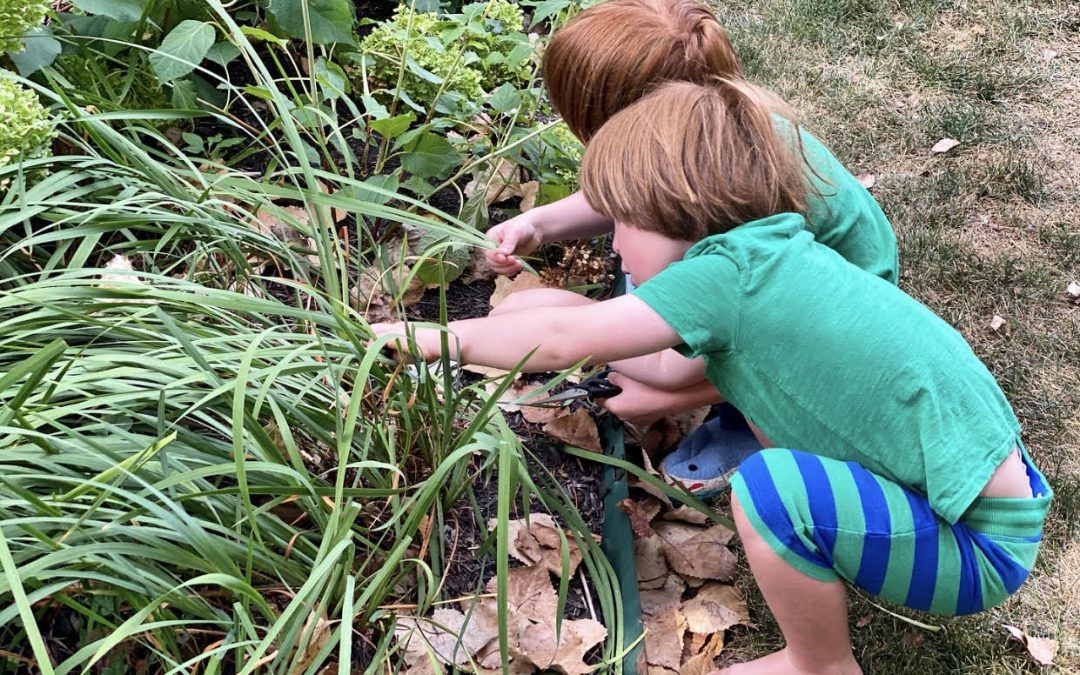by Jen Hutson, CDA mom
The Common But Lost Arts
Your yard is a treasure of lost arts and loves.
If you have two square feet of dirt, you can introduce your child to one of these lost arts.
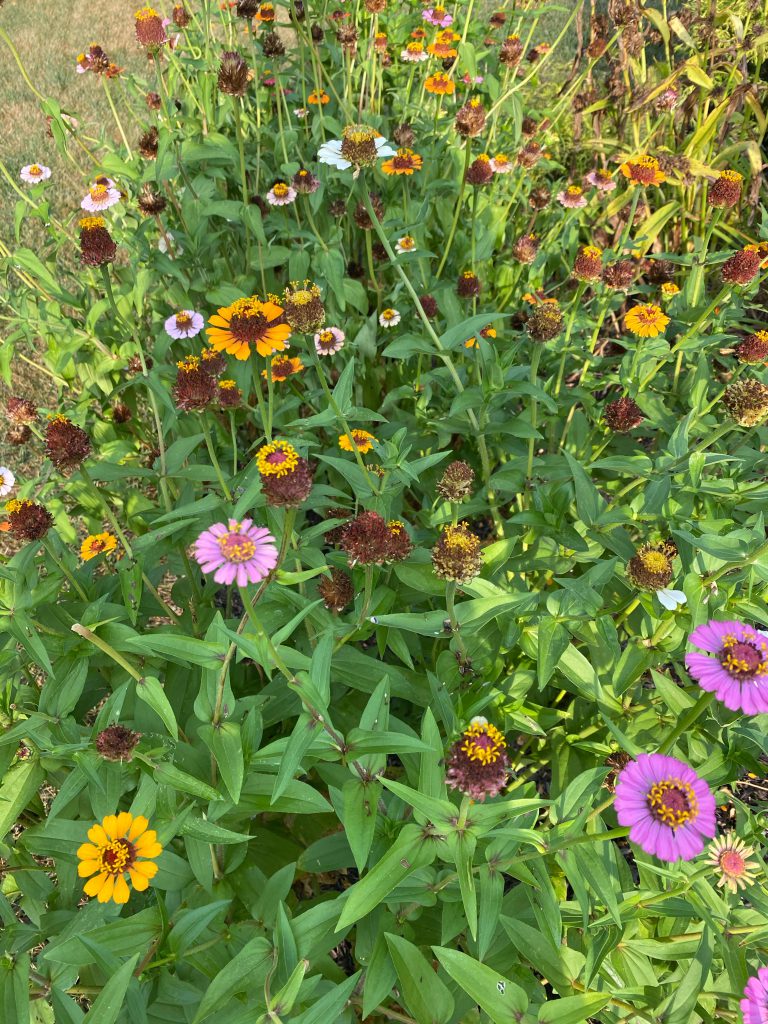
Classical educator Christopher Hall explains common arts and the marginalization of them from our society:
“Today we outsource most of our basic needs…. We fall back upon the fruits of the labor force, and our own income, more than the work of our own hands…. While this is not a bad thing in itself…, the distance between ourselves and the baseline skills that fulfill our basic needs is widening by the year…. We not only don’t do for ourselves now, we have forgotten how to do for ourselves, and that costs us in profound ways.” 1
Common arts include navigation, trade, agriculture, metal and woodworking, masonry, cooking, sewing and textile, hunting, architecture, animal farming and medicine. Likely you wonder – why do these even matter? We’ll continue to explore this question in future blogs, but for now, know that
“When masterfully practiced, they reflect an aesthetic not only of work, but of the true, good and beautiful.”2
While I occasionally entertain daydreams of homesteading, I don’t claim to have an “actual” garden. However, patches of life spring up around our yard at various seasons and times, beckoning to be touched and harvested.
One Tiny Garden
One favorite area is our patch of zinnias. These flowers are made for children as they are not stuffy, manicured plants. They are easy and approachable, lavishly hued and low maintenance. In planting a few square feet of zinnias, I’ve been able to introduce my boys to the common art of agriculture, more specifically, gardening.
We started with purchased seeds; one variety being taller than the other. In the spring the boys prepare the plot. They rake back mulch and hoe a few inches of soil and Indiana clay. They scatter small collections of seeds. Then they grab handfuls of dirt and sift it over the seeds, following with mulch. The last step is to water the first few weeks, and what child doesn’t love manning a water hose?
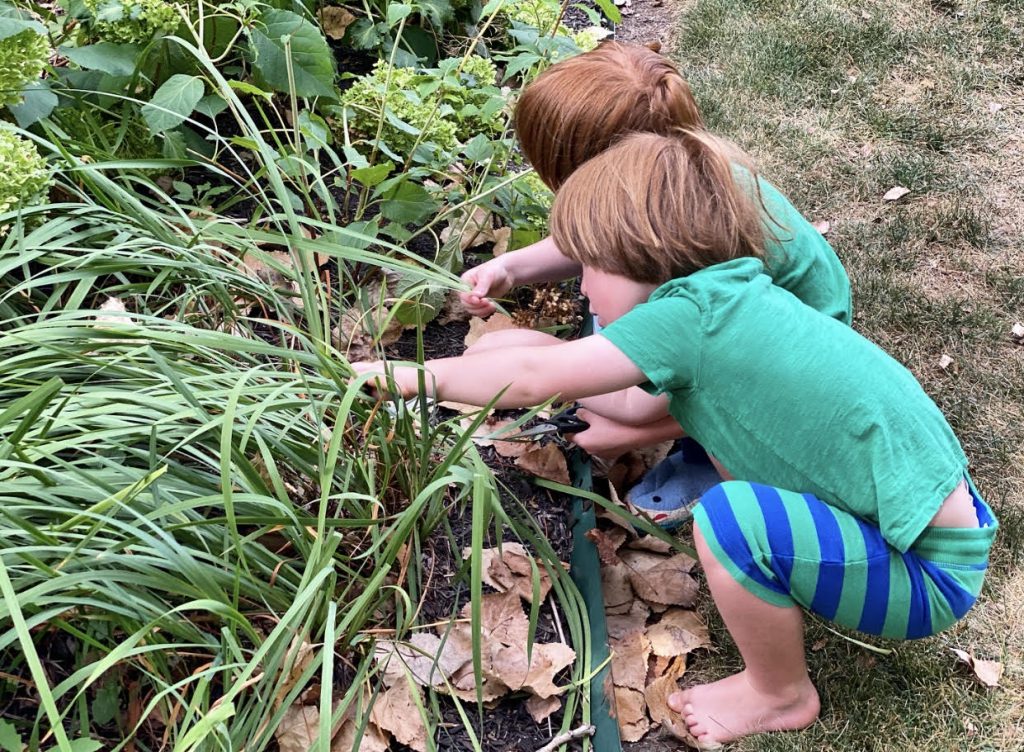
Will the seeds sprout? How long will it take? What color will they be? When is it my turn?
We wait for the tiny double leaf sprouts to appear. The boys nearly forget the sleepy seeds they planted. Seedlings turn into young plants, and the starburst blooms appear, tightly shut against the sun. We take time to notice each stage. Soon the flowers unfurl, and the bees and butterflies come to call. We watch them drink nectar and discuss what happens next. The boys walk amongst the bees looking at flowers, curious but not fearful. Working amongst the bees, they see them as friend rather than foe. Conversations and questions also sprout, giving us opportunity to discuss the work of creation around us.
Where do the bees fly to? What do they do with the nectar? Will they sting me?
The boys begin to ask when we can cut the flowers and display them inside. Last year, at 3 ½ years old, the boys began to use shears and trimmers. Many parents scoff when they consider the combination of toddlers and sharp tools, but know that my boys are not exceptional. What they have is opportunity. Children require supervision but we sell short their ability to be careful and methodical at the right time. I demonstrate how to cut flowers for vases, as the boys’ impulse is to work quickly and chop the flowers just under their heads. They slow their efforts and try to remember to leave a long stem.

Can I pull off the leaves? Can I fill the jars? Where did this bug come from?
As the season extends into late summer, the boys want to cut flowerheads for harvesting seeds. I remind them that seeds need time to grow and mature just like the flowers themselves. The boys reluctantly practice self-control and leave some of the flowerheads to wither and dry on the stem. Only then the seeds will be ready for harvesting. Leaving the ugly spent heads for later is a discipline, rather than discarding them in the trash and moving on. We learn life springs from death, and beauty changes throughout time.
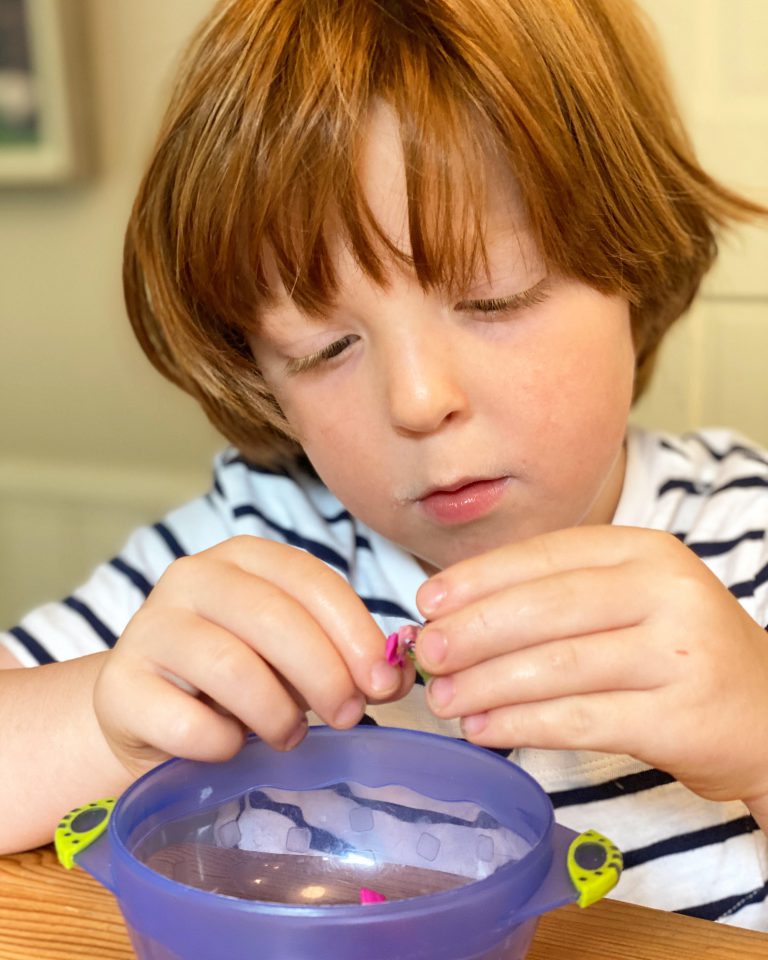
But this one looks dead! We have to leave them still?
We bring the flowers in and strip them of leaves and the boys fill the vases with water, knowing its lifegiving properties for any living thing, including plants. We sometimes collect grasses and lavender and other flowers from our beds to add to our arrangements. At times, we even include wild natives and, dare I say, weeds!
When the butterflies have disappeared and all the lively heads have been cut and admired, we return again to collect the withered heads that remain. It is now that expectant space of preparation between the last hot days and the cool mornings of fall. The boys are finally rewarded for their patience and cut the seed heads right at their base, dropping them into a bucket. They feel empowered, each with their own shears and bucket, doing the same work as their mother.
Look at this one I cut! Is this flower ready? Here’s another color! I found a double!
When the buckets are full, we take them inside and lay out trays on the kitchen table. I remove a few petals and place one in each of the boys’ hands. They find the tiny arrow shaped seed at the base of each petal. This is what we are after!
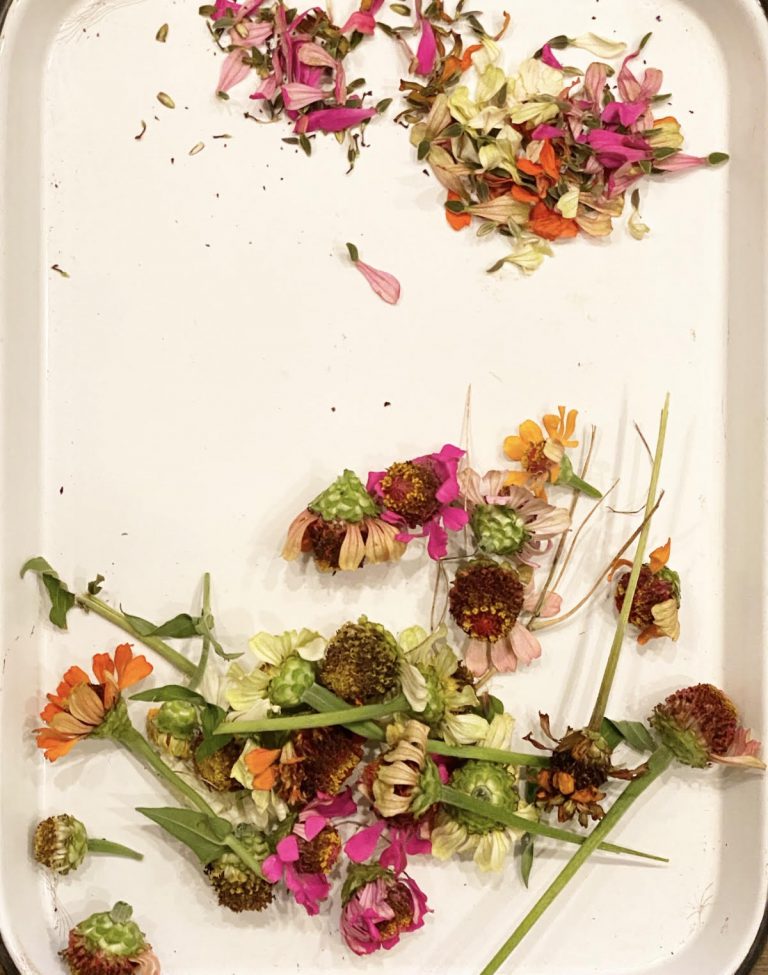
The boys sit, even at 4 years old, pulling petals and seeds and placing them on the tray. Next spring we will recollect the work they did. They will understand that our stored seeds came not from a store, but from our own garden, and their own hands. The petals dry in the basement and are then stored in containers for the following spring.
Look at all my seeds! How long till we plant them?
From the Hands to the Heart
We are whole organisms. What we do with our hands makes its way to our hearts. Even the work in a zinnia patch. This small world, this common art, begins to take root in the boys and become a part of them. It becomes a part of the rhythm of their life, the fabric of their memory and imagination. They can mark time and express themselves by it. Of course, they are unaware of the deep work going on within. That is for the parent or the teacher or the master to know.
“Common arts requires the story that comes with facts and figures, the basics about how to identify and work with materials or practice a service. But achievement of mastery requires the story that comes with imagination.”3
This is not a stopping place but rather a jumping off space. This experience is a beginning rather than an end, a series of ripples that widen and ride out with the boys. So in time, this work of the hands and heart extends further than even our own house. Flowers are pressed and used to create gifts. Seeds are shared with neighbors and friends. And the beautiful work reaches outward.
And all this comes from 2 square feet of dirt.
Want to try this simple but rich art with your child? You just need the following: some dirt and seed, some time, some kids and some simple household tools.
May God bless the work of your hands so it will find its way to your heart.
Watch Ty harvesting zinnia seeds from this week.
- Christopher Hall, MAT, Common Arts Education (Camp Hill, PA: Classical Academic Press, 2021), 19.
- Christopher Hall, MAT, Common Arts Education (Camp Hill, PA: Classical Academic Press, 2021), 31
- Christopher Hall, MAT, Common Arts Education (Camp Hill, PA: Classical Academic Press, 2021), 67.
Classical Reading List


